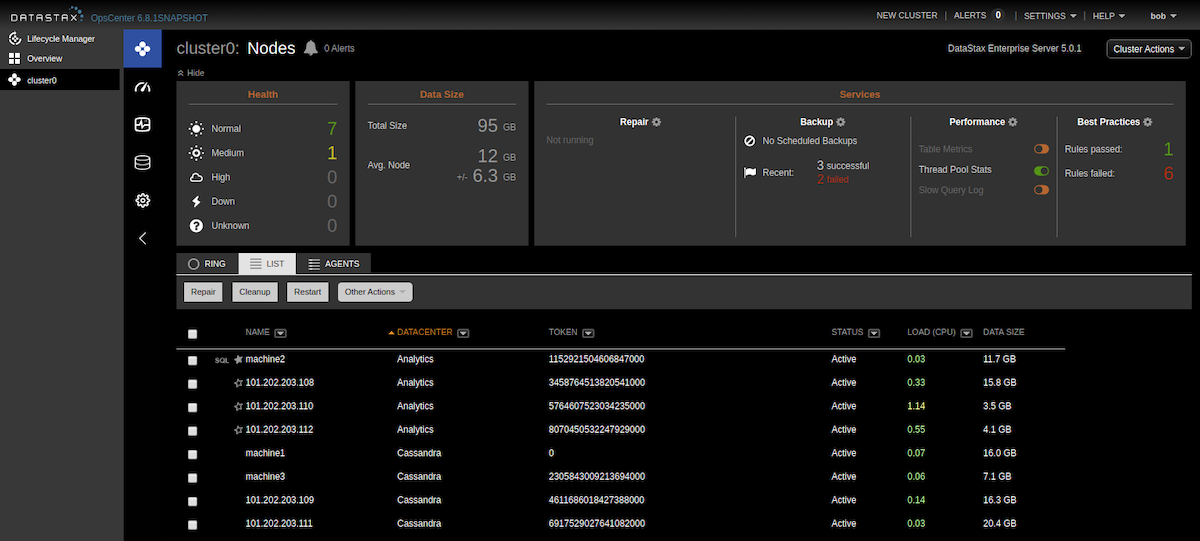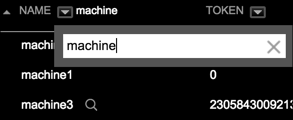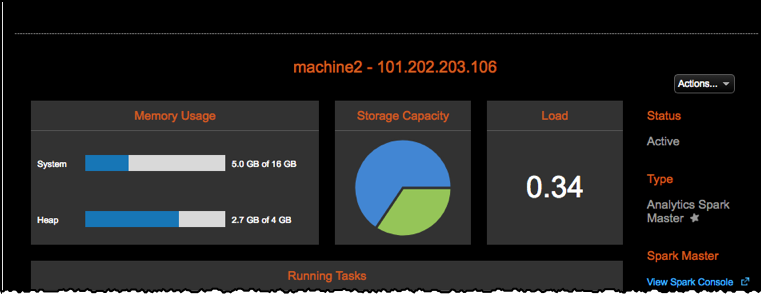List view
List view is an alternative to the graphical Ring view. List view provides faster access to data and more flexibility when viewing data. All data is updated in real time.
To access the List view, click cluster > Nodes > List tab.

Select a check box next to the node or nodes to perform an operation on. Select the box next to the Name label to quickly select all nodes. Frequently performed actions such as repair and startup are available from the List view menu. The Other Actions menu provides options for less frequently performed actions, such as moving nodes. For more information, see Node management operations.
Icon legend
The icons indicate the following:
-
Spark Masters are indicated with a solid star icon. The Node Details dialog also indicates the Spark Master in the Type area.
-
Spark Workers are indicated with a star outline icon. The Node Details dialog also indicates the Spark Workers in the Type area.
-
Solr search nodes are indicated with the magnify glass icon. The Node Details dialog also indicates Search with Graph-enabled nodes in the Type area.
-
Always On SQL Service (AOSS) nodes are indicated with the
SQLicon. -
Graph nodes are not indicated.
Filter nodes
Filter the list of nodes by Name, Datacenter, Token (applicable for non-vnodes only), Status, Load (CPU) , or Data Size column criteria.
Filtering nodes reduces the number of nodes in the list, which is useful when working with large clusters that contain hundreds of nodes.
Filter by:
-
Name: Enter the full or partial machine name or IP address in the text box. The list is filtered by the criteria, and the filter criteria appears next to the column label.

-
Datacenter: Filter by datacenter node type category of All, Analytics, Cassandra, or Solr.
-
Status: Filter by the node status of All, Active, or Unresponsive. The Status column shows whether a node is up or down, restarting, in a special mode (such as joining, draining, or moving), or running any tasks such as compactions.
-
Load (CPU): Filter by All; Low, High, Medium CPU load; or Offline.
If the filter criteria results in no matching nodes, click the Clear Filters button.
Sort columns
Click a column label to sort columns in ascending or descending order. View which nodes have the most data, the highest CPU load, and so forth.
View node details
Clicking the row for a node in the nodes list reveals the node details dialog that shows more information. Use the Actions menu to run various operations on the node.
View node details such as Status, Capacity, Uptime, and Memory Usage, including In Memory if in use.

